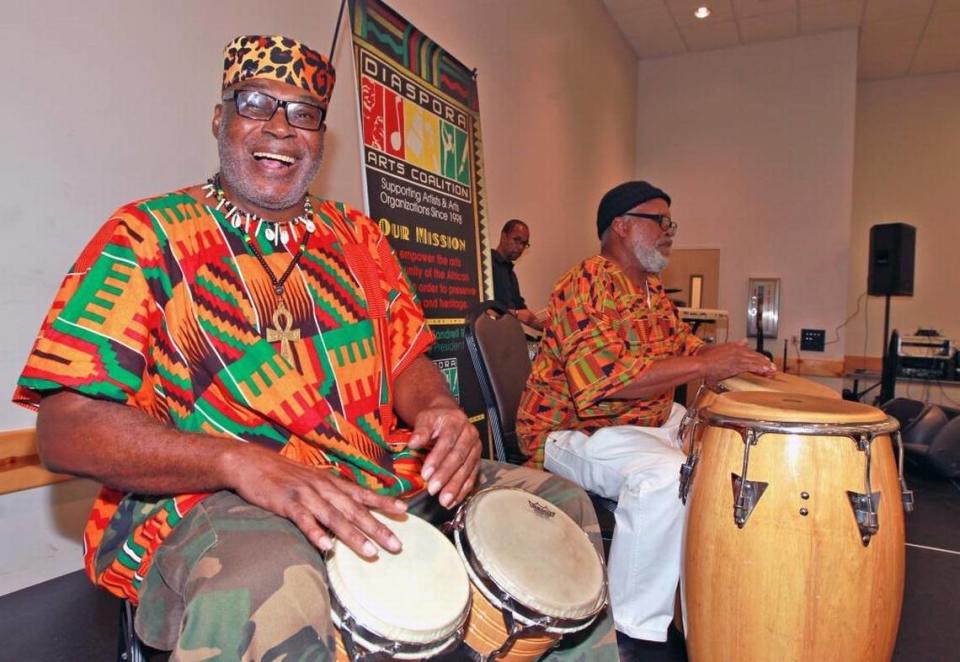It’s Kwanzaa. Here’s how the holiday connects to heritage, and how it started in Miami
- Oops!Something went wrong.Please try again later.
What is Kwanzaa?
The word represents a non-religious African-American and Pan-African holiday celebration established to connect black Americans with their African historical and cultural heritage.
Following the Watts riots in Los Angeles, Kwanzaa was created in 1966 by Maulana Karenga, professor and chairman of Black Studies at California State University, Long Beach.
With its roots in the Black National movement, Kwanzaa emphasizes family, community and culture annually in candlelight ceremonies with seven principles, Dec. 26 through Jan. 1.
Two years after Kwanzaa was created, Overtown resident Irby McKnight heard about the new holiday and sent for materials. He shared information with Mattie Zanders at the Community Action Agency during the establishment of the Cultural Advisory Council of Overtown (CACO).
The Kwanzaa principles were presented to the CACO board. Meetings were held alternate months at Phillis Wheatley Elementary School and in the library at Dixie Park, later renamed Gibson Park. Founding members of CACO included Eli Powell, Lee La Rue, Beverly Harris and Jackie Bell.

In 1968, CACO incorporated the Kwanzaa principles into its agenda, to help enrich the spirit of the community. Using symbols and artifacts, Overtown’s first Kwanzaa celebration presented the Seven Principles:
▪ Umoja — Unity
▪ Kujichagulia — Self-determination
▪ Ujima — Collective work and responsibility
▪ Ujamaa — Cooperative economics
▪ Nia — Purpose;
▪ Kuumba — Creativity
▪ Imani — Faith.
During the late 1970s, Dorrin Cooper of Dade County Parks; Clayton Hamilton and Joan Timmons of what’s now known as the African Heritage Cultural Center; Pat Williams, The M-Ensemble, and Wendell Narcisse, of the local Theater of Afro Arts, added their talents and skills to the ceremonies. I represented The Black Archives.
Narcisse was passionate about Kwanzaa. In the 1980s one celebration featured the Theater of Afro Arts’ interpretation of a play written by Ntozake Shange that debuted on Broadway in 1976, For Colored Girls Who Have Considered Suicide/When the Rainbow is Enuf. Television news anchor Dwight Lauderdale hosted several events.
Note: This explanation on the history of Kwanzaa was originally published in the Miami Herald on Dec. 27, 2009.
Dorothy Jenkins Fields, PhD, is a historian and founder of the Black Archives, History and Research Foundation of South Florida Inc.

